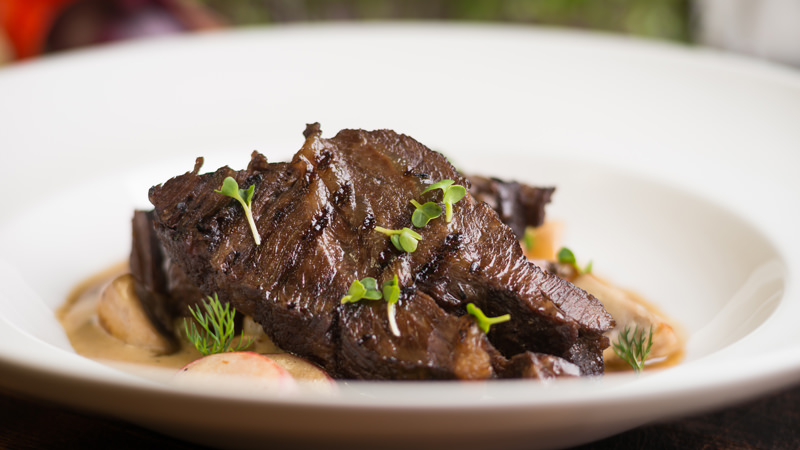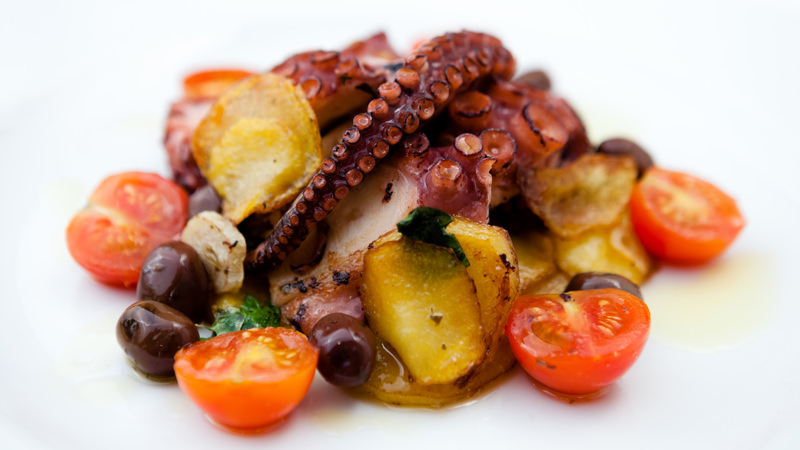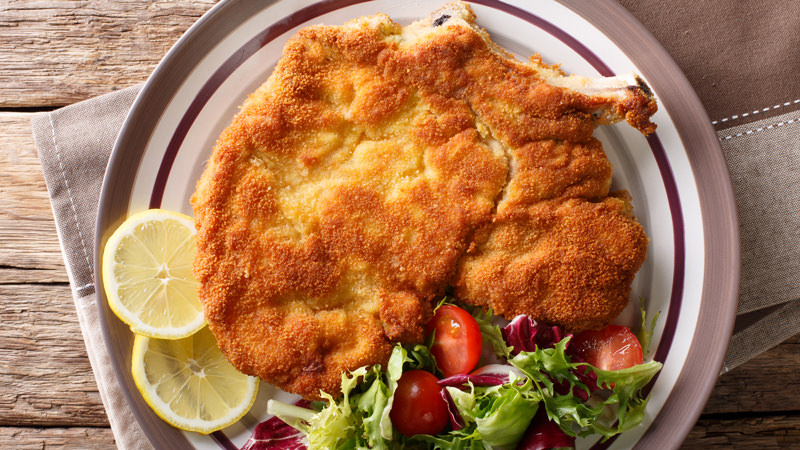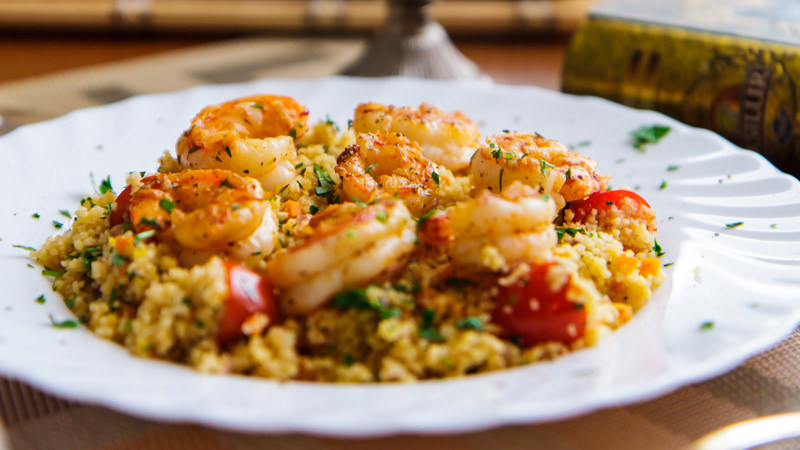
Pairing food with wine can be daunting. On the one hand, there’s science. Those who take that route will pore over acid matches and all that.
But in the simplest terms, the best way to pair foods and wines is to remember one helpful rhyme: what grows together goes together. Translation? Eat foods grown and prepared in the same geographic areas as your bottle.
Few cuisines are as globally adored as Italian food, a genre that spans twenty regions and centuries of fine-tuning. We Americans are lucky enough to have access to a number of Italian regional ingredients, either by import or by homegrown adoption (hello, arugula).
Want to learn how to pair your favorite classic Italian dishes with incredible regional Italian wines? Here are eight mouth-watering combinations. Warning: Do not read this hungry.
Steak Florentine
This classic Tuscan dish is revered for its simplicity and abundant flavor. The local Chianina bull is the prized source of this porterhouse cut, also called a T-bone, drizzled with olive oil and sea salt, rubbed with garlic, and charred to perfection. It is often served with grilled vegetables. Sounds like you can do this tonight! But what about the wine?
Chianti Classico: As local as the Chianina bull, this Sangiovese-based blend is the perfect pairing for this dish. Bright cherry and cranberry aromas have slight notes of earth, and sometimes a tinge of mocha, all of which complements the char of the meat. These wines are also medium-bodied with good depth and great acidity, so they won’t weigh down your palate.
Prosciutto-Wrapped Figs with Grana Padano, Drizzled with Balsamic
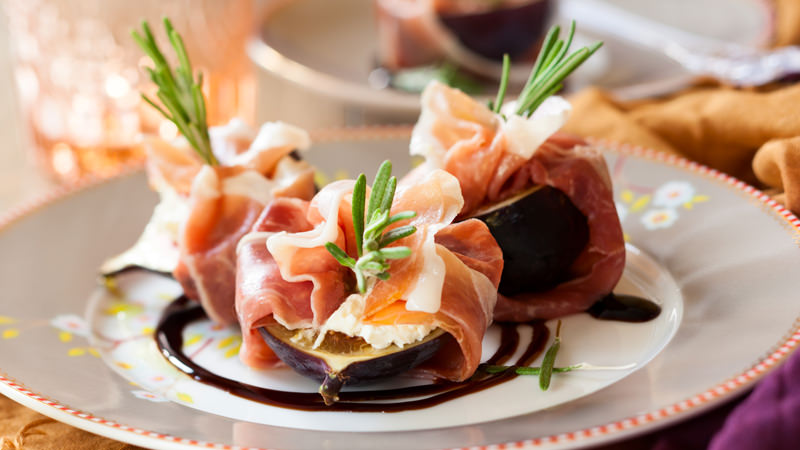
Emilia Romagna is considered Italy’s bread basket, and has a long list of amazing local specialties.This simple plate allows each ingredient to sing. Sweet, ripe figs wrapped with prosciutto? Yes please! Hunks of gnarled Grana Padano drizzled lightly with balsamic? Yes again!
Lambrusco: This sparkling red wine from Emilia Romagna is so perfect for this dish it hurts. The softly sweet, slightly bitter tang of Lambrusco complements this dish like a dream, and the bubbles heighten your perception of acidity, cleansing your palate after every sip. Lambruscos are wonderful for cutting through fat and bringing out the best flavors in your food.
Trenete and Pesto
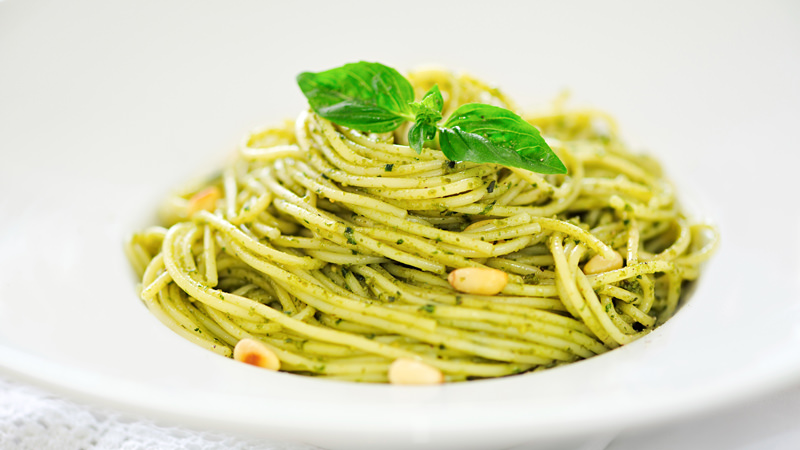
Liguria is the home of pesto, the savory basil-and-pine-nut concoction we all know and love. The classic Trenette and Pesto dish is again simple and full of flavor. Drizzle the dish with a little olive oil and a side of focaccia, which just so happens to also hail from Liguria.
Gavi di Gavi: The town of Gavi in Piedmont, just north of Liguria, makes this wine from the Cortese grape. It’s called Gavi di Gavi, and is one of the best-known white wine appellations in Italy. This crisp, mineral-driven wine gained popularity as a match for Ligurian seafood, but that’s not all. Take a bite of pesto and a sip of Gavi, and you will thank us.
Brasato al Barolo
This hearty Piedmontese dish is usually made with veal, braised in expensive Barolo wine and then broiled. It’s amazing. The good news is if you can’t find or don’t want to use veal, you can substitute pork chops. And if you don’t want to buy a Barolo, we have an alternative for that, too.
Langhe Nebbiolo: The town of Barolo is located in the hills known as the Langhe, and the grape, Nebbiolo, that makes Barolo famous is grown here. Langhe Nebbiolo wines are powerful, elegant, and earthy, all at the same time, and feature bright cherry fruit with note of rose petals and a hint of leather. The best part? They are about half the price of Barolo.
Porchetta
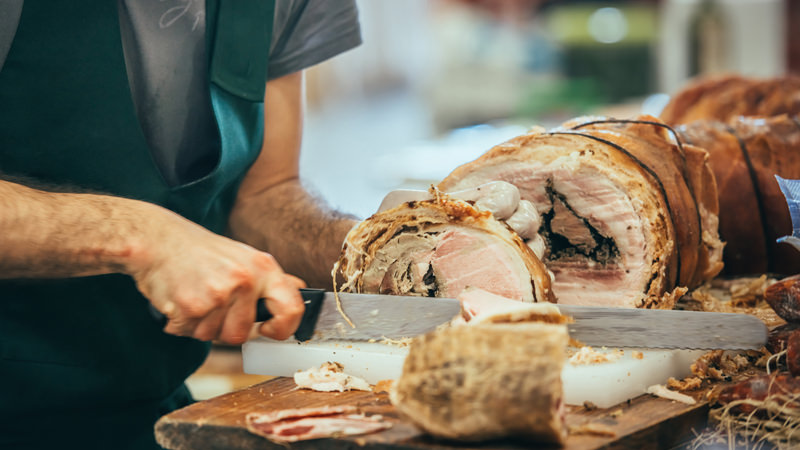
Drive anywhere through central Italy and you will likely come across porchetta. From the roadside to the osterias, this savory boneless pork loin from Abruzzo is stuffed with liver, fennel and other herbs, and then spit-roasted. It’s very popular on sandwiches in Italy or as the perfect late-night snack. It’s fun to make porchetta at home, or you might even find one prepared at a local Italian market or grocery store.
Montepulciano d’Abruzzo: This medium-bodied, dark-hued wine is Abruzzo’s pride and joy, and a staple red wine in many Italian-American restaurants. Montepulciano d’Abruzzo wines have nice fruit depth with notes of plums and herbs, and are just right for the salty, fatty flavors of porchetta. While they can be incredibly affordable, look beyond the bargain bin for a slightly more expensive bottle that will truly reflect the complexity of this grape. Grab a few and take down a porky plate with your besties.
Octopus With Potatoes
Simplicity is the spice of life on the Tyrrhenian coast. You boil your octopus, grill it, drizzle olive oil on it, and eat it with potatoes, fresh cherry tomatoes, and delicious olives. That’s it! That’s how it’s done in Napoli. But, as always, this straightforward preparation packs a huge flavor punch. If you don’t want to mess around with octopus at home, you can also use shrimp, squid, or cuttlefish.
Falanghina: The lemon-tinged, bracing minerality of this local wine will plant you right on the coast of Napoli. It’s sunshine in a bottle. Try to find Falanghina from the Campania region for the best example. The clean, crisp citrus fruit and high acidity of the wine perfectly match simply prepared octopus, heightening its subtle charm.
Cotoletta alla Milanese
Love Wiener Schnitzel? Italy has its own version – with a slight twist. Cotoletta alla Milanese comes from Lombardy, a northern region with some Austrian roots. Yes, it is a breaded veal cutlet, but cotolette means “little rib,” and this cutlet is bone-in. And instead of potato salad, in Lombardy, roasted potatoes are served alongside this favorite.
Oltrepo Pavese: The wines of Lombardy’s Oltrepo Pavese are often a blend of local grapes, such as Barbera, Uva Rara, and Pinot Nero (a.k.a. Pinot Noir). They are soft- and medium-bodied, with bright fruit notes and great acidity, and tend to be quite affordable. Sipping a slightly chilled Oltrepo Pavese, while nibbling on a little rib, will have you saying Bravo!
Couscous al Pesce
Fun fact: Sicily’s cuisine is heavily influenced by North African ingredients. Take couscous. On the largest island in the Mediterranean, they cook couscous in a savory fish broth and top it with anything from the sea. This traditional dish is easy to make stateside, and over here we often top it with lightly floured calamari.
Nero d’Avola: This is a red wine. Wait what? For a fish dish? YES! Nero d’Avola is Sicily’s primary red grape. The wines from Nero d’Avola are medium-bodied with notes of plum, black cherries and a little hint of licorice. Even though it’s fish-based the broth for couscous al pesce can be a bit dense, and this wine has the bright acidity and savory notes to stand up to it, and complement the dish’s complexity.
This article is sponsored by the Italian Trade Commission.


